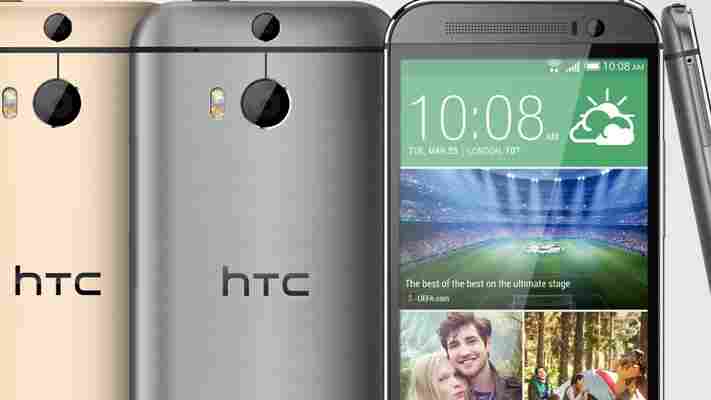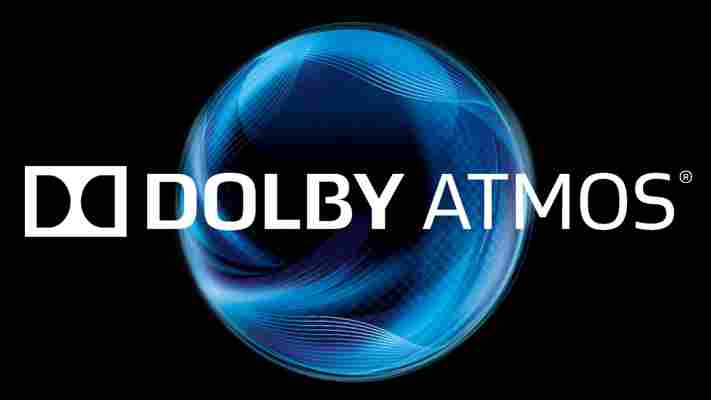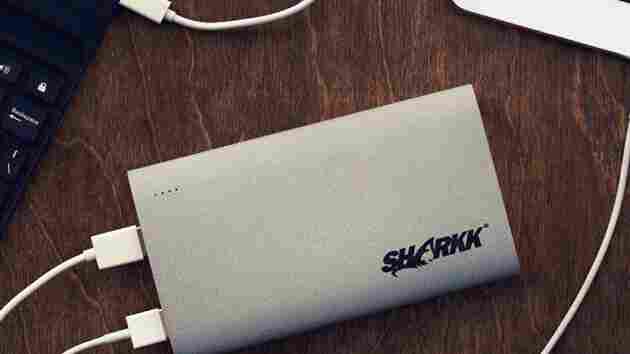HTC can’t stop milking its core HTC One design, and the latest addition to the ever-growing family is the One M8s.

Arriving in the UK this month, the One M8s keeps the same metallic unibody chassis and, aside of a few under-the-bonnet hardware changes, looks just like its predecessors.
What it’s essentially aimed at, however, is providing a cheaper price point for potential buyers to get started with the company’s flagship range – previous One handsets, including its One M9, have always been premium devices.
Key changes between the HTC One M8 and One M8s include a 13-megapixel camera sensor, rather than its 4-UltraPixel setup, and a (less capable) Octa-Core processor. It also has a slightly larger battery, at 2840mAh.
Pricing hasn’t yet been announced, but Anandtech says it will cost £380 when it goes on sale, making it a fair bit cheaper than the original M8 or the new M9.
Read next: HTC One M9 review: An incredibly capable handset that just isn’t very exciting
10 things you need to know about the Dolby Atmos home theatre system
The Dolby Atmos system has been creating a 3D aural experience in theatres since June 2012. Now the company that brought us surround sound is bringing its object-based audio experience into the home and on mobile devices.

The weird thing about audio is that it’s incredibly important to film, but when done well you don’t even notice. You’ve probably already heard Dolby’s Atmos technology in movies like Star Trek Into the Darkness or the best film of the Summer, Guardians of Galaxy. But when you do notice what’s going on with the audio, it’s spectacular.
So Atmos is coming to your TV and phone, but what does it mean exactly? We’ve broken down how Atmos will change home theatre and mobile audio and what it means for you and your ears.
What is Dolby Atmos?
The Dolby Atmos system places speakers above the audience. But it’s more than just shoving a few speakers in the ceiling. The actual Atmos system lets film makers place sound elements in a 3D space. With 5.1 and 7.1 systems, when you want to create the illusion that someone is behind the audience you just throw that sound to those speakers. It’s a speaker based system. With Atmos, instead of pushing a sound to a particular speaker, it’s pushed to a place in a 3D space. For example, to create the illusion of a helicopter flying overhead the sound engineering doesn’t pick which speaker the sound of the helicopter will come out of. Instead, the engineer picks a point in a 3D space and the Atmos system automatically adjusts the sound coming of the appropriate speaker.
The tiny white line at the top of the cube represents a helicopter flying in a 3D space. The dots on the left represent the speakers. The subwoofer and two left overhead speakers are enabled at this point.
The result is an audio experience that pulls the sound up from the ear-level speakers of 7.1 and 5.1 systems. With Atmos it sounds like water is falling on a canopy above you in a scene with a storm. When something goes whizzing by your ears it “feels” like it’s actually happening in the theatre. You can hear the system in action in Atmos-certified theatres with recent movies like Guardians of the Galaxy , Star Trek Into the Darkness and The Life of Pi .
How does it work in my house?
An A/V receiver with an Atmos renderer first takes a room calibration. During that initial setup, the space is mapped out to best create an audio 3D landscape. Whether you use the Atmos-enabled ceiling mounted speakers or Atmos-enabled speakers that point up and bounce the sound off the ceiling, it’s the same result and it recreates the same 3D audio environment found in certified theatres.
How does it work on Mobile?
A hardware encoder in a mobile device takes Atmos-certified content and recreates the object-oriented soundscape with your headphones. Fortunately, you won’t need to buy new headphones, but because it’s simulating the sound coming from speakers above your head, it’s not as impressive as the home theatre system. Still, it sounded pretty cool in the demo.
Do I need to buy stuff?
Yes. For the home you’ll need a new Atmos-enabled receiver with a renderer that takes the meta-data found in audio of supporting movies and pushes it to not only to the ceiling speakers, but also the rest of your home theatre speakers. You’ll also need to purchase at least two new Atmos-enabled speakers.
If you’re the kind of person who enjoys drilling holes in your ceiling, you can buy overhead stand-alone speakers. For the rest of us, you can purchase either new surround-sound speakers that have speakers on top that point at the ceiling. Or, you can buy module speakers that sit atop the speakers you already own. Dolby says you’ll need a minimum of two of these ceiling-facing speakers, but suggests four speakers or modules for optimal sound. If you’re already buying the new receiver, you might as well get all four speakers.
As for Blu-ray and streamers, as long as the device supports Dolby Digital Plus and can pass that information to the receiver, you won’t need to buy a new device. Most new Blu-ray players support the standard. Just make sure to enable bit-stream out. The current Roku, Apple TV and Amazon Fire TV all support Dolby Digital pass through.
What about for mobile?
For mobile, you can either buy a tablet or smartphone with a hardware Atmos renderer inside. There’s nothing on the market right now, but Dolby did say that software companies could license the technology to put in their apps. So you might be able to enjoy Atmos on your current smartphone in the future.
What content is available?
There are over 150 Atmos-enabled movies . In addition to the movies mentioned above, The Hobbit trilogy, Brave , Gravity, Ender’s Game, Frozen, Pacific Rim, and the upcoming Avengers: Age of Ultron are all Atmos-mixed movies. Of course, the studios need to release a home-video version of those movies with Atmos audio enabled in order for the home theatre system to create the same soundscape at home. Fortunately, the same mix used for a theatre can be used at home. So it’s really just a matter of updating the audio mix.
Will there be streaming options?
That’s up to Netflix, Hulu, Amazon and the rest of the companies that stream video to our homes. According to Dolby, a 5.1 audio stream takes up 384kKbps and an stream with Atmos meta-data takes up the same space. So all studios need to do is give the Netflix’s and Hulu’s of the world a new audio stream for their movies. Netflix told TNW it has “no plans at present” and Hulu and Amazon haven’t replied to our queries yet. But if Atmos gains wide adoption, expect them all to support the audio feature in the future.
When can I buy this stuff?
A majority of the gear will be available this fall in time for holiday shopping. This includes speakers, speaker modules and receivers from company’s like Denon , Integra , Marantz , Onkyo , Pioneer , and Yamaha . There’s even an all-in-one home theatre set coming from Onkyo .
As for mobile devices, that’s a tougher call. But I wouldn’t be surprised if Amazon Kindle Fire tablet refresh this fall includes Atmos support. The Kindle Fire line has been powered by Dolby technology for two years and frankly it’s made the tablets (and Fire Phone) sound spectacular.
How much?
The Onkyo all-in-one system will set you back $899 and the prices just climb up from there.
Worth it?
If you’re a movie buff and early adopter with a pile of cash lying around, it’s worth checking out the system. It’ll never sound as nice as the theatre, but it’s pretty damn close. But like all technologies the prices will drop as the market matures.
Portable charging for your gadgets: Top deals from TNW
When staying connected is a priority, watching your phone’s battery die a slow death is always a painful experience. But not to worry — we have plenty of backup power at low prices, which ALL include free shipping!

In most scenarios, 20,000mAh should keep your devices powered until you get to a wall socket — it is enough to charge an iPhone seven times over. But for camping or road-tripping, the SolarJuice’s ability to recharge using the power of the sun provides some welcome security.
Solar panels cover one side of this lightweight battery, while the shell is waterproof. The battery has anti-explosion properties, and it provides power via two USB ports for simultaneous charging — 2.1A for fast-charging devices, and 1A. Grab it now for $49.99 with free shipping.
➤ Get this deal
The Power Vault also offers a generous capacity, but its most notable attribute is compactness. It is about the size of a phablet, and weighs just 0.58 lbs. It has dual USB ports for side-by-side charging (again, 2.1A and 1A) and the blue exterior is made from aluminum, so it is pretty durable.
The other nice thing about this battery is the current price — you can order it now for $29.99, which includes shipping.
➤ Get this deal
Along with a bigger capacity, the Innori intelligently manages the power it stores, to minimize wastage. When you plug a device into one of the three charging USB ports, the battery automatically senses what current is required, and charges accordingly.
The ports are also optimized for different charging speeds — two are for phones, one is for tablets and laptops — and four indicator lights show how much the battery has left to give. Considering all of that, the Innori is impressively slim, and it sports a flashlight. Grab one now at $34.99 with free shipping.
➤ Get this deal
The “rock-surface” design of the SHARKK is certainly stylish, and it is great in action. The curved surface of the battery includes indicator lights, and at one end there are two USB ports — one made for smartphones, one for tablets — surrounded by zingy orange.
The capacity equates to around six full iPhone charges or 4 full Samsung refills, but the battery is still quite lightweight.
Order the SHARKK now for $29.99 with free shipping.
➤ Get this deal
The one thing about charging is that it is quite restrictive — it relies on being tethered to a power supply. The PowerStand provides 2,800 mAh of portable electricity (a bit more than a full phone charge), but it also holds your phone in a useful position while it is charging.
The PowerStand is triangular, and it has an array of small suction cups down one side, which grip the back of your phone. This presents the touchscreen at a gentle upward angle, which is good for watching movies or just zipping through your inbox. Grab the PowerStand now for the special low price of $16, which includes shipping.
➤ Get this deal
